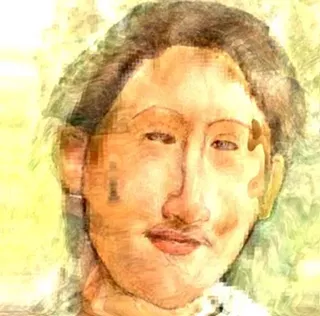"I had no exposure to it whatsover as I grew up as a musician," he says. Lasansky started out as a clarinetist, and there's no clarinet part in this most beloved of oratorios. If you're not a singer, a string player or maybe a trumpeter or oboist, you're not likely to perform it.
"I never sang it," Lasansky says. "I don't think I even heard Messiah beyond the Hallelujah Chorus until I was in my 20s.
"After that, I realized it was one of those pieces that are performed all the time, and as a conductor, I figured I needed to know it. It was a wonderful discovery for me, but it wasn't in my roots."
As if to compensate for all those years of neglect, Lasansky has conducted Messiah most Christmases since he founded the Catalina Chamber Orchestra in 1991. (This season, the orchestra changed its name to Tucson Chamber Orchestra, to avoid confusion with the little town of Catalina, and it has completely professionalized. "There are a lot of new players," Lasansky says. "The old orchestra has gone away, in a way.")
This year, he has gone all out. Not only is he conducting the work with his chamber orchestra this weekend; he hand-picked and personally rehearsed the chorus (instead of employing an existing community choir, as in the past), and this month, he's been immersing students at St. Gregory College Preparatory School in Messiah lore. He gave guest lectures in music, English and European history classes, and presided over an all-school assembly, performing bits of the work with his chorus and a string quartet.
"The kids were very receptive and very polite," reports Lasansky, who also admits to an ulterior motive: "I wanted to give them some background in the hopes they'd get interested and go home and tell their parents about the performances."
Those public performances will occur this Friday, Nov. 30, at 7:30 p.m., at St. Andrew's Presbyterian Church, across from Tohono Chul Park; and Sunday, Dec. 2, at 2 p.m., at St. Gregory's Nickerson Theater. Both concerts are intended for the entire community, not just the school, and will involve an orchestra of about 30 players, a chorus of similar number and eight vocal soloists.
These forces reflect those generally used in Handel's day (although the personnel, and even which arias got sung by which voice type, varied widely from one performance to another).
George Frideric Handel wrote the extensive score; complete, it takes about 2 1/2 hours, not counting intermissions. (Lasansky's group will perform all of Part 1, which is Christmas-centered, and only selections from the remainder, which is standard operating procedure this time of year.) Charles Jennens assembled the text from the Old Testament and New, compiling a rejoinder to the Deists who were then gaining ground in English thought. The Deists believed in a supreme being, but one who merely created the world and then pretty much sat back and let it run without interference. Jennens prepared a text focusing on God's intervention in human affairs, specifically the insertion of Jesus into the cogs of the human machine, complete with all the supernatural details that the more reason-based Deists dismissed.
Thus, Messiah is all about miracles and redemption. Only the first part of the oratorio is appropriate for Christmas; the subsequent portions, which are really key to understanding Messiah, concern the crucifixion and resurrection of Jesus, and the promised resurrection and redemption of believers on Judgment Day.
Oddly, despite this quite-specific argument found right in the oratorio's text, Messiah has been embraced as some things it is not--pantheistic, humanistic--to conform to the philosophies of people who admire the work for one thing that it is--a collection of stirring arias, ensembles and choruses. It has also become, along with The Nutcracker and Dickens' A Christmas Carol, a Christmas tradition, even though Messiah is more appropriately presented at Easter--as it was in the beginning.
Messiah was first performed in April 1742, in Dublin. Further performances followed each year, and by 1750, it was a certified hit in the British Isles. It didn't really catch on in continental Europe, but Messiah came to America in 1770 (first performed in a New York City tavern, of all places) and quickly gained a firm foothold here.
As the mania for amateur choirs grew in England and America, Messiah was presented by larger and larger forces--choirs in the hundreds, in many cases, and orchestras that had to be expanded in order to avoid being covered by the voices.
Lasansky says he's trying to emulate the smaller ensembles Handel originally worked with: "The addition of forces subsequent to Handel's life turned the work into something more ponderous, with slower tempos, and something with a more romantic vision. But the music is more powerful in what we think is its original guise."
This will be Lasansky's first Messiah after a few seasons off. "That period away from it proved to be beneficial to me to solidify my view of the piece," he says. "I feel that I have a stronger conception of it now, and the power of the work speaks to me more loudly than ever before. One can look at it from a purely religious or nonreligious viewpoint, but either way, it's a message of hope."








